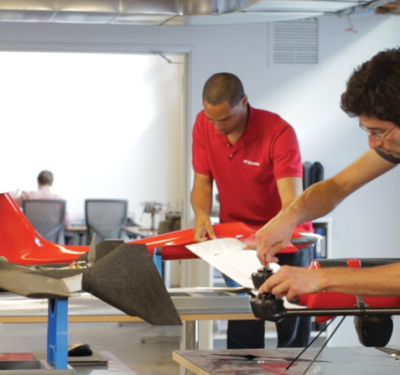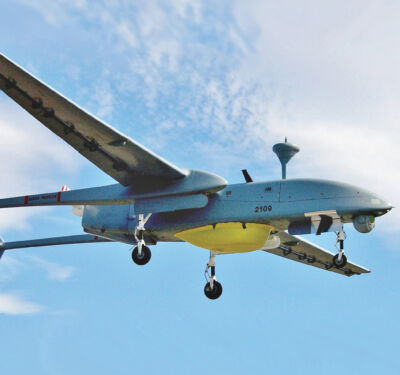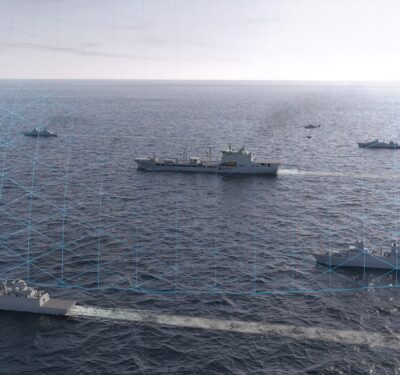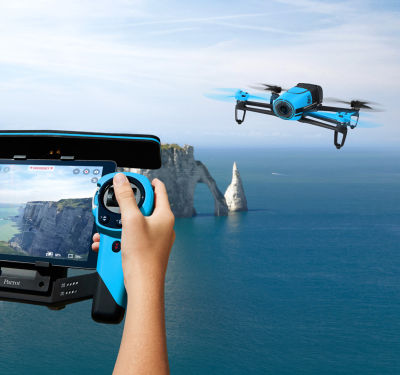General Atomics leaders share how the YFQ-42A is redefining human-machine teaming with open systems architecture, advanced autonomy, and modular sensor integration—positioning the U.S. Air Force for next-gen air dominance.
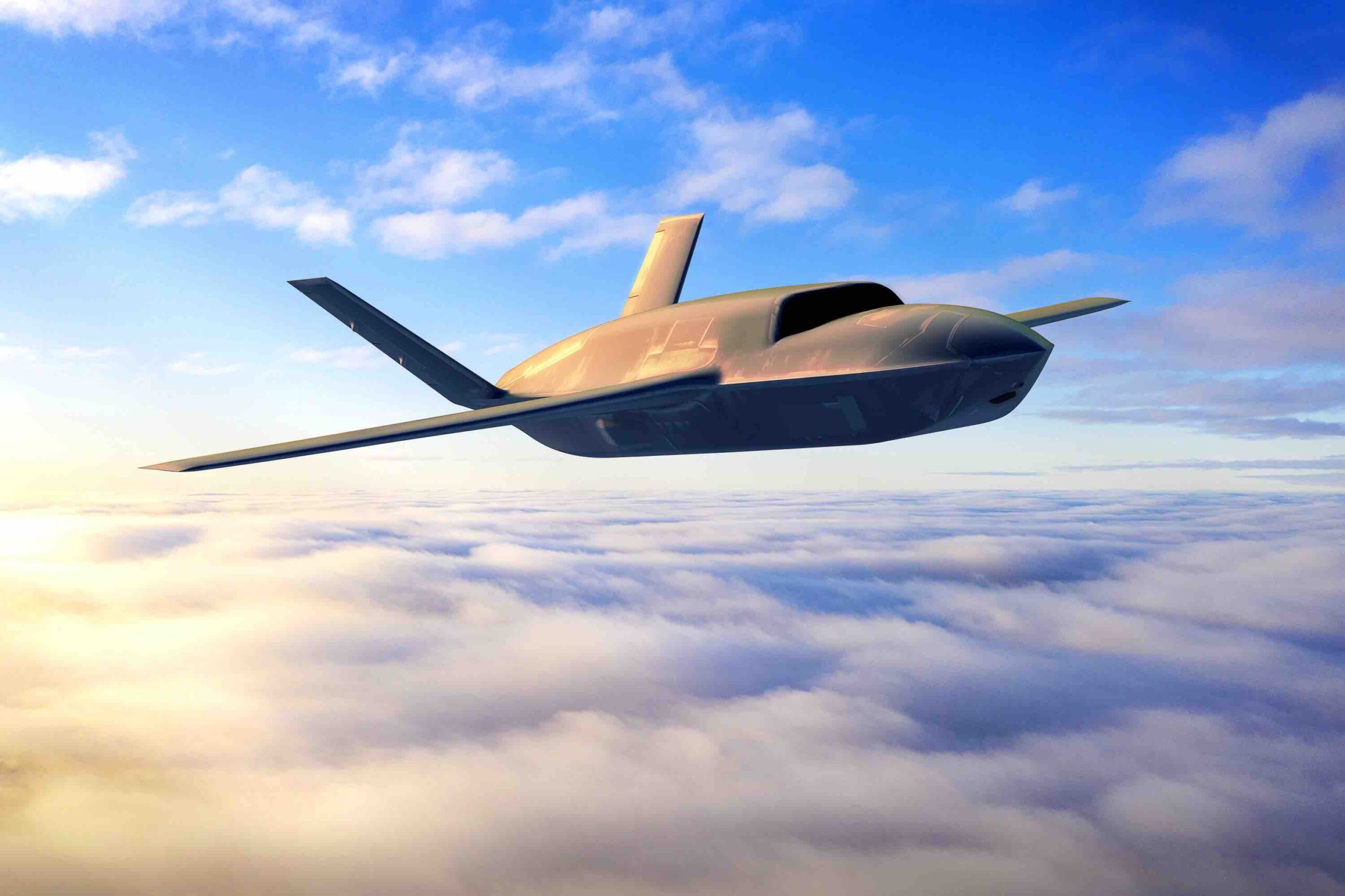
In the world of human-machine integration and teaming for our modern military, the Collaborative Combat Aircraft (CCA) program stands out as a landmark initiative by the U.S. Air Force. Designed to integrate autonomous unmanned aircraft with manned fighter jets, CCAs aim to enhance air superiority by providing a cost-effective and agile force multiplier. This strategic approach is part of the service’s broader Next Generation Air Dominance (NGAD) program, which seeks to maintain U.S. air superiority through advanced technologies (think: 6th Gen. fighter) and system-of-systems integration.
Last April, the CCA program gained significant momentum when the Air Force down-selected General Atomics Aeronautical Systems and Anduril Industries to develop the first production-representative test vehicles for the program. This decision marked a significant milestone, as these companies outcompeted major defense contractors like Lockheed Martin, Northrop Grumman and Boeing. Their selection underscores the Air Force’s confidence in these two companies to deliver cutting-edge autonomous aircraft with capabilities that meet operational requirements.
This March, at the AFA Warfare Symposium, the Chief of Staff of the Air Force (CSAF) designated these aircraft, for the first time, with formal Mission Design Series (MDS) designations: the YFQ-42A, developed by General Atomics, and the YFQ-44A, developed by Anduril. This designation officially signifies a pivotal moment for air combat systems.
We had the opportunity to sit down with Dr. Anastacia MacAllister, technical director of autonomy and artificial intelligence at General Atomics, and C. Mark Brinkley, the company’s senior director of MARCOMM, to discuss these latest developments and future plans for their CCA aircraft.
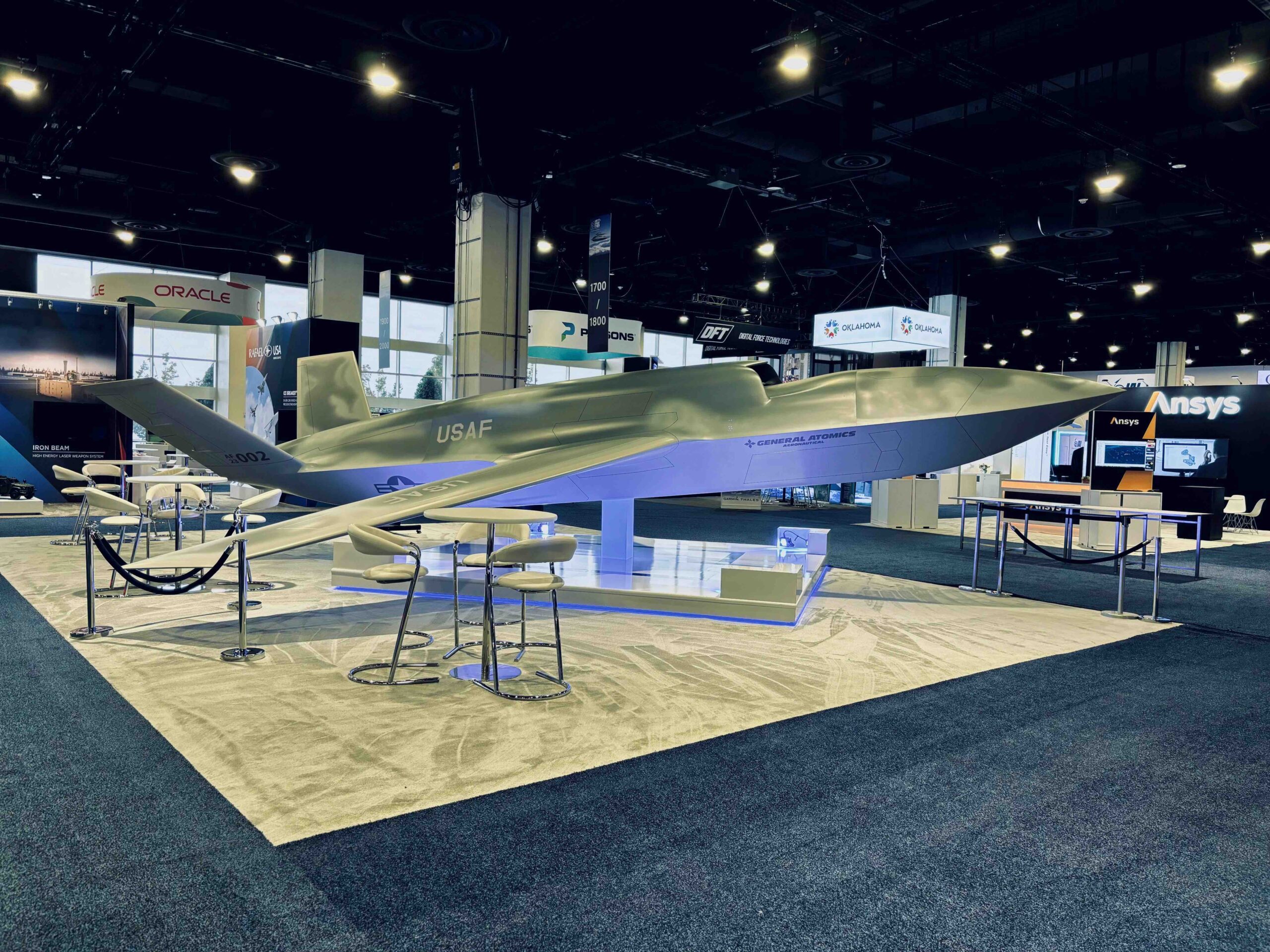
MODULAR OPEN SYSTEMS ARCHITECTURE
The vision for CCA involves a modular open systems architecture (MOSA) to enable seamless communication between different aircraft. This means General Atomics’ drones could potentially communicate not only with their own systems but also with other drones or manned fighters to ensure a best-of-breed approach for the warfighter. The goal is to create a software-enabled ecosystem where algorithms can be easily updated or replaced.
“We’re working toward an ecosystem where we can transport data from one system to another, enabling interoperability across different platforms,” Dr. MacAllister said. “This is crucial for leveraging the best technologies available and ensuring that our systems can adapt quickly to evolving operational needs.”
This modular architecture allows for flexibility and scalability, including the ability to integrate new sensors, effectors or communication systems as they become available. This approach ensures that CCAs can evolve alongside technological advancements…and provide the Air Force with a future-proof capability.
SENSOR INTEGRATION AND EFFECTORS
Sensor integration remains a critical feature for CCAs, as these aircraft are, by definition, being designed to provide enhanced situational awareness and protection for manned fighters. The challenge lies in getting sensor data to the autonomy systems in a way that is interoperable and also provides operational context. This crucial combination will enable the autonomy to make better decisions by leveraging all available data sources.
“Sensor integration is vital because it allows autonomy to make informed decisions,” Dr. MacAllister noted. “Without interoperable sensor data, these systems would be operating in a vacuum, unable to fully leverage their capabilities.”
General Atomics is working on integrating a wide range of sensors, including radar, electronic warfare (EW) systems and optical sensors, Brinkley said. These sensors will provide real-time data to the autonomous systems and allow them to detect and respond to threats more effectively. The integration of effectors, such as missiles or bombs, will further enhance the combat capability of CCAs. Ultimately, this ability will enable them to engage targets either autonomously or under direct human supervision.
OVERCOMING INITIAL CHALLENGES
The development of CCAs has not been without its challenges. This integration of various systems to ensure interoperability presented one of the initial major hurdles. It involved overcoming what Dr. MacAllister referred to as the “plumbing” issues—setting up the infrastructure to move data from one system to another efficiently. To knock out this roadblock, General Atomics made significant investments in standardizing data exchanges using government reference architectures. This resulted in “substantial progress” in the ecosystem integration necessary for these systems to effectively operate together.
“We’ve come a long way in integrating the ecosystem together,” Dr. MacAllister said. “It’s about making sure data links, platforms and command systems work seamlessly to enable interoperability.” This integration remains crucial to achieve the goal of a MOSA solution that allows different drones and manned aircraft to communicate and operate together.
HUMAN-MACHINE INTERFACE AND TRAINING
As CCAs start integrating into air combat operations, the human-machine interface becomes increasingly important. Pilots will need to coordinate not just their own aircraft but also multiple drones simultaneously. General Atomics aims to develop simulations and training exercises that will allow pilots to build a cognitive model of their autonomous team, emulating how high-performing teams operate through extensive training and trust.
“The maturation of these systems allows pilots to train like they fight,” Brinkley noted. “Through simulation and exercises, they can develop a mental model of how their autonomous team will operate, enhancing interoperability and effectiveness.”
This training approach will be critical for pilots to effectively command and control multiple drones in real-time and leverage the full potential of autonomous systems in combat scenarios. By integrating autonomous aircraft into training exercises, General Atomics seeks to create a seamless interaction between manned and unmanned assets and enhance overall mission success.
FUTURE DEVELOPMENTS AND MISSIONS
General Atomics continues to push the boundaries of drone technology with ongoing developments in sensor integration and autonomous software for active combat scenarios. The company is also exploring new mission sets for CCA beyond traditional visual range engagements, including humanitarian aid missions and logistical resupply operations. The adaptability of the CCA design allows it to pivot quickly between different missions, which provides the Air Force with a highly valuable asset.
“We’re excited about the versatility of our CCA design,” Brinkley said. “It can quickly adapt to different missions, whether sensing, shooting or a combination, providing the Air Force with a flexible tool that can respond to evolving operational needs.”
Looking ahead, Brinkley said the company is investing in ultra-long endurance engines and hybrid electric propulsion systems, which could significantly extend the mission time of future unmanned aircraft. He explained, “This (engine tech) will change how people think about unmanned aircraft, enabling them to stay on station longer and serve as persistent overwatch assets.”
INTERNATIONAL PARTNERSHIPS AND FUTURE CONCEPTS
General Atomics also stands poised to start discussions with international customers about potential partnerships, collaborations and alliances to further expand the reach of its CCA technology. This could involve joint development, training exercises or operational deployments. All of these opportunities would further advance interoperability of these systems across different military forces.
In addition to international partnerships, General Atomics is also exploring future concepts that leverage advancements in autonomy and sensor integration. This includes the potential use of small UAS in conjunction with larger aircraft to support complex mission scenarios that combine multiple platforms.
Brinkley confirmed, “We’re looking at how we use some of our other aircraft and incorporate parts and pieces of this to incorporate small UAS.” He continued, “How do you incorporate two or three or four small aircraft launched from a larger aircraft? What could that do to some sort of attack mission?”
When all is said and done, as the CCA program progresses, General Atomics remains committed to delivering a capability that will expand the U.S. ability to project combat airpower effectively. The YFQ-42A and its integration of autonomous systems with manned aircraft represents a significant shift in military strategy and offers enhanced flexibility and effectiveness on the battlefield.
As General Atomics moves forward in the “what else” phase of innovation and expands its CCA’s capabilities, we can expect to see further advancements in sensor integration, autonomous software, and international partnerships. These developments will not only enhance the operational capabilities of CCAs but also pave the way for new mission sets and applications, from humanitarian aid to anti-submarine warfare. Brinkley said it best: “The Air Force is going to get a great product from us on this!” We all look forward to witnessing these potential applications of CCA technology, which will only continue to grow…and provide the Air Force with an incredibly versatile and powerful tool for a wide range of missions.


